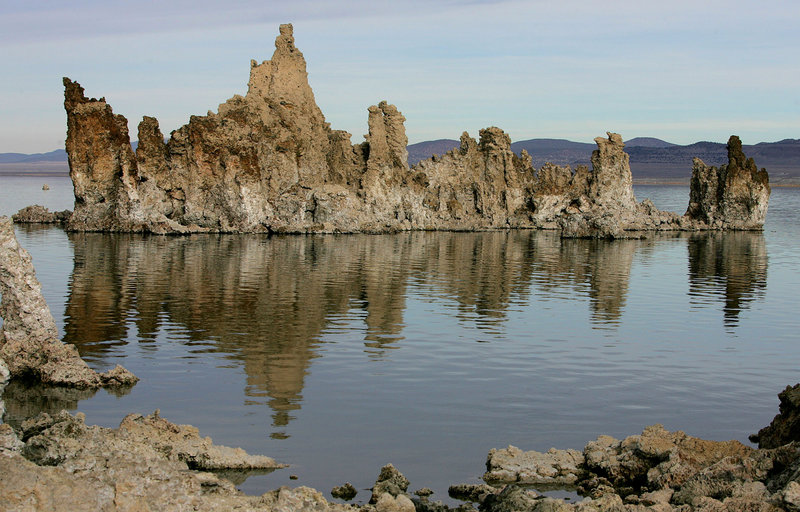NEW YORK – It was a provocative finding: strange bacteria in a California lake that thrived on something completely unexpected — arsenic. What it suggested is that life, a very different kind of life, could possibly exist on some other planet.
The research, published by a leading scientific journal in 2010, led to overheated speculation about how life might exist elsewhere — and quickly some dissent about the original finding.
On Sunday, that same journal, Science, released two papers that rip apart the original research. They “clearly show” that the bacteria can’t use arsenic as the researchers claimed, said an accompanying statement from the journal.
The saga began when scientists led by Felisa Wolfe-Simon of NASA’s Astrobiology Institute published a paper that said the bacteria, found at Mono Lake in eastern California, could grow by substituting arsenic for phosphorus. The researchers had looked at Mono Lake because of its high arsenic levels, and they reported their conclusions from lab experiments.
Their paper raised eyebrows because phosphorus was considered essential to life, while arsenic, while chemically similar, is a poison.
If the bacteria can break the rules like this, some argued, who knows what kinds of life may be possible beyond Earth?
But not everybody bought the conclusions of the paper. Last year, Science published a bunch of challenges from other scientists, and the paper has long been an object of skepticism.
For both new papers, scientists did their own tests of the bacteria. One team, led by Rosemary Redfield of the University of British Columbia in Vancouver, Canada, reports that arsenic does not contribute to the bacteria’s growth. Maybe the original results came from some sort of undetected contaminant in the arsenic the researchers used, they suggest.
The other paper, from Swiss researchers, finds the bacteria to be highly resistant to the poisonous effects of arsenic but still dependent on phosphorus to grow. They concluded that in the original experiment, trace contamination with phosphorous may have let the bacteria grow.
As the Science statement summarizes the results, the new work shows the bacterial species “does not break the long-held rules of life, contrary to how Wolfe-Simon had interpreted her group’s data.”
Nevertheless, Wolfe-Simon, now at Lawrence Berkeley National Laboratory, stands by her research. In an email to The Associated Press, she said, “There is nothing in the data of these new papers that contradicts our published data.” She said her team continues to build upon its finding of the extreme resistance to arsenic poisoning.
Send questions/comments to the editors.



Success. Please wait for the page to reload. If the page does not reload within 5 seconds, please refresh the page.
Enter your email and password to access comments.
Hi, to comment on stories you must . This profile is in addition to your subscription and website login.
Already have a commenting profile? .
Invalid username/password.
Please check your email to confirm and complete your registration.
Only subscribers are eligible to post comments. Please subscribe or login first for digital access. Here’s why.
Use the form below to reset your password. When you've submitted your account email, we will send an email with a reset code.